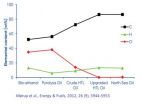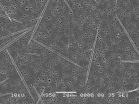(Press-News.org) A closer look at personalized or point-of-care healthcare was the focus of a recent international conference in India organized and chaired by NJIT Distinguished Professor Atam Dhawan. The IEEE Engineering in Medicine and Biology Society (EMBS) International Special Topic Conference in point-of-care healthcare technologies, broadcast around the world, focused on topics ranging from 21st century medicine with new smart cross-and trans-disciplinary technologies to how wireless communications will change how physicians care for patients.
"The last century witnessed a technology revolution in medicine and health through instrumentation, computer and information and communication technologies," said Dhawan, an electrical engineer. "This revolution has continued into the 21st century innovations re-defining the relationship between patient and healthcare providers."
Conference trends included the following.
New smart cross and trans disciplinary biosensor, biomarker, and information and data communication technologies will become more widely used. These technologies, along with health monitoring and data analysis systems, address healthcare priorities in developing and developed economies. Among the key priorities: hypertension and cardiovascular diseases, diabetes, infectious disease, women's health during pregnancy and elderly healthcare.
As life expectancy increases, the global community will face new quality of life and healthcare challenges at an affordable cost. The most vital challenge to developing nations is providing minimal quality healthcare to rural communities.
Miniaturized devices and wireless communication will change dramatically how physicians and surgeons can care for patients and the role patients will need to take in their own health care.
The hope is that health care will become more personalized through the tailoring of interventions to individual patients.
Providing minimal healthcare in the eastern part of the globe which accounts for more than two-thirds of the world population will remain challenging especially for curbing diseases and infections like HIV/AIDS, tuberculosis or malaria. The issue will become more critical if there is a potential outbreak of an epidemic.
Educating users on the implementation of these new technologies, data communication, compliance and behavioral change poses the most formidable challenge. People will need to realize and accept a new role and reasonability in keeping themselves, family members or others healthy, said Dhawan.
"It appears that personalized medicine or point-of-care healthcare technologies are creating a paradigm-shift in global healthcare. However, the development, deployment and compliance issues related to affordable global healthcare must be examined towards developing sound business models so they can be sustained with an economic impact to support the implementation infrastructure."
Dhawan, who is also the interim dean of the Albert Dorman Honors College (ADHC), was selected to represent the IEEE Engineering in Medicine and Biology Society as a 2012-2013 Distinguished Lecturer to travel worldwide providing lectures about advances today in medicine and technology. In December, he was a special guest lecturer at Cornell University.
Dhawan is best known among engineering peers as the inventor of an important innovation for an instrument commonly used to detect skin cancer--the nevoscope. The optical transillumination technology developed by Dhawan was also commercialized into a line of vein visualization products, Veinlite.
Dhawan currently is developing a multi-spectral optical and near-infrared tissue imaging technology to measure and monitor glucose levels in the blood non-invasively without painful pricking to get a drop of blood as required by conventional glucose monitors.
Dhawan is the founder and executive director of the Interdisciplinary Design Studio offered to ADHC students. The Studio is a unique, enhanced undergraduate research program focused on teaching students a roadmap of innovation to entrepreneurship, where students develop innovative ideas of commercial products, designs or services with high-potential impact under a streamlined curriculum, faculty advising and industry mentoring over three and a half years.
INFORMATION:
NJIT, New Jersey's science and technology university, enrolls more than 9,943 students pursuing bachelor's, master's and doctoral degrees in 120 programs. The university consists of six colleges: Newark College of Engineering, College of Architecture and Design, College of Science and Liberal Arts, School of Management, College of Computing Sciences and Albert Dorman Honors College. U.S. News & World Report's 2012 Annual Guide to America's Best Colleges ranked NJIT in the top tier of national research universities. NJIT is internationally recognized for being at the edge in knowledge in architecture, applied mathematics, wireless communications and networking, solar physics, advanced engineered particulate materials, nanotechnology, neural engineering and e-learning. Many courses and certificate programs, as well as graduate degrees, are available online through the Division of Continuing Professional Education.
END
As fibers go, there's never been anything quite like spider silk. Stretch it. Bend it. Soak it. Dry it out. Spider silk holds up. It is five times stronger than steel and can expand nearly a third greater than its original length and snap right back like new. Ounce-for-ounce spider silk is even stronger than Kevlar, the man-made fiber used in bulletproof vests.
It would be understandable to think that science knows all there is to know about the remarkable physics of spider silk, but the truth is far from that. Now, using a long-known-but-underutilized spectroscopy technique, ...
To emphasize, the HTL process accepts all biomasses from modern society – sewage sludge, manure, wood, compost and plant material along with waste from households, meat factories, dairy production and similar industries.
It is by far the most feedstock flexible of any liquid fuel producing process, including pyrolysis, bio-ethanol, gasification with Fischer-Tropsch or catalytic upgrading of different vegetable or agro-industrial residual oils, and does not carry higher costs than these.
Hydrothermal liquefaction is basically pressure cooking, but instead of cooking the ...
CAMBRIDGE, Mass. -- The peaks of the Himalayas are a modern remnant of massive tectonic forces that fused India with Asia tens of millions of years ago. Previous estimates have suggested this collision occurred about 50 million years ago, as India, moving northward at a rapid pace, crushed up against Eurasia. The crumple zone between the two plates gave rise to the Himalayas, which today bear geologic traces of both India and Asia. Geologists have sought to characterize the rocks of the Himalayas in order to retrace one of the planet's most dramatic tectonic collisions.
Now ...
UNIVERSITY PARK, Pa. -- Preserving genetically diverse local crops in areas where small-scale farms are rapidly modernizing is possible, according to a Penn State geographer, who is part of an international research project investigating the biodiversity of maize, or corn, in hotspots of Bolivia, Peru and Mexico.
Hotspots are areas where cultivation of peaches and other non-traditional crops has exploded over the past decade, noted Karl Zimmerer, professor and head of the Department of Geography, and where small-scale farms are often female-run and have been previously ...
HERSHEY, Pa. --A compound that stimulates the production of a tumor-fighting protein may improve the usefulness of the protein in cancer therapy, according to a team of researchers.
TRAIL is a natural anti-tumor protein that suppresses tumor development during immune surveillance -- the immune system's process of patrolling the body for cancer cells. This process is lost during cancer progression, which leads to uncontrolled growth and spread of tumors.
The ability of TRAIL to initiate cell death selectively in cancer cells has led to ongoing clinical trials with artificially ...
Bad news about the economy could cause you to pack on the pounds. This according to a new study from the University of Miami School of Business Administration published in the February edition of Psychological Science, a journal of the Association of Psychological Science. The study shows that when there is a perception of tough times, people tend to seek higher-calorie foods that will keep them satisfied longer. When subconsciously primed with such messages, a "live for today" impulse is triggered causing people to consume nearly 40 percent more food than when compared ...
With help from a wind tunnel and the latest DNA technology, U.S. Department of Agriculture (USDA) scientists are shedding light on the travel patterns of microbes in soils carried off by strong winds. The work has implications for soil health and could lead to management practices that minimize the damage to soils caused by wind erosion.
Wind erosion is an emerging issue in soil conservation efforts. Agricultural Research Service (ARS) scientists have been studying wind-eroded soils since the 1930s, but few studies have focused on the effects of wind on the bacteria, ...
INDIANAPOLIS -- Medical literature long has touted the benefits of omega-3 fatty acids for the heart. But until now, researchers have not studied the potential benefit for people on hemodialysis, who are among the highest-risk patients for sudden cardiac death.
A study published Feb. 6 online in the journal Kidney International, which included 100 patients who died of sudden cardiac death during their first year of hemodialysis and 300 patients who survived, is the first to examine this question.
Allon N. Friedman, M.D., associate professor of medicine in the Division ...
SAN FRANCISCO, Feb. 6, 2013 -- Nitrogen in ocean waters fuels the growth of two tiny but toxic phytoplankton species that are harmful to marine life and human health, warns a new study published in the Journal of Phycology.
Researchers from San Francisco State University found that nitrogen entering the ocean -- whether through natural processes or pollution -- boosts the growth and toxicity of a group of phytoplankton that can cause the human illness Amnesic Shellfish Poisoning.
Commonly found in marine waters off the North American West Coast, these diatoms (phytoplankton ...
Since the observations made by English naturalist Charles Darwin on the Galapagos Islands, researchers have been interested in how physical barriers, such as isolation on a particular island, can lead to the formation of new species through the process of natural selection. Natural selection is a process whereby heritable traits that enhance survival become more common in successive generations, while unfavorable heritable traits become less common. Over time, animals and plants that have morphologies or other attributes that enhance their suitability to a particular environment ...


